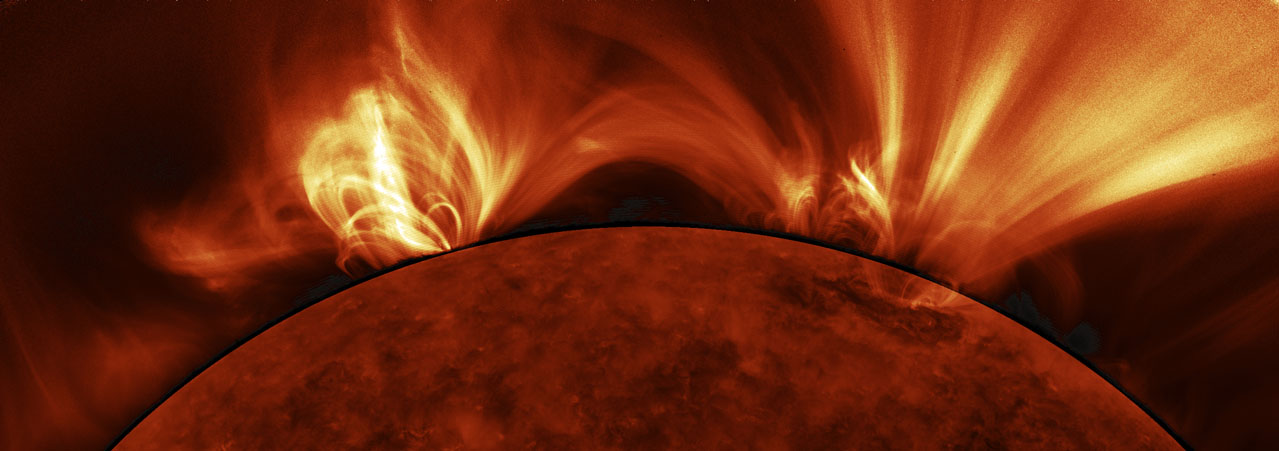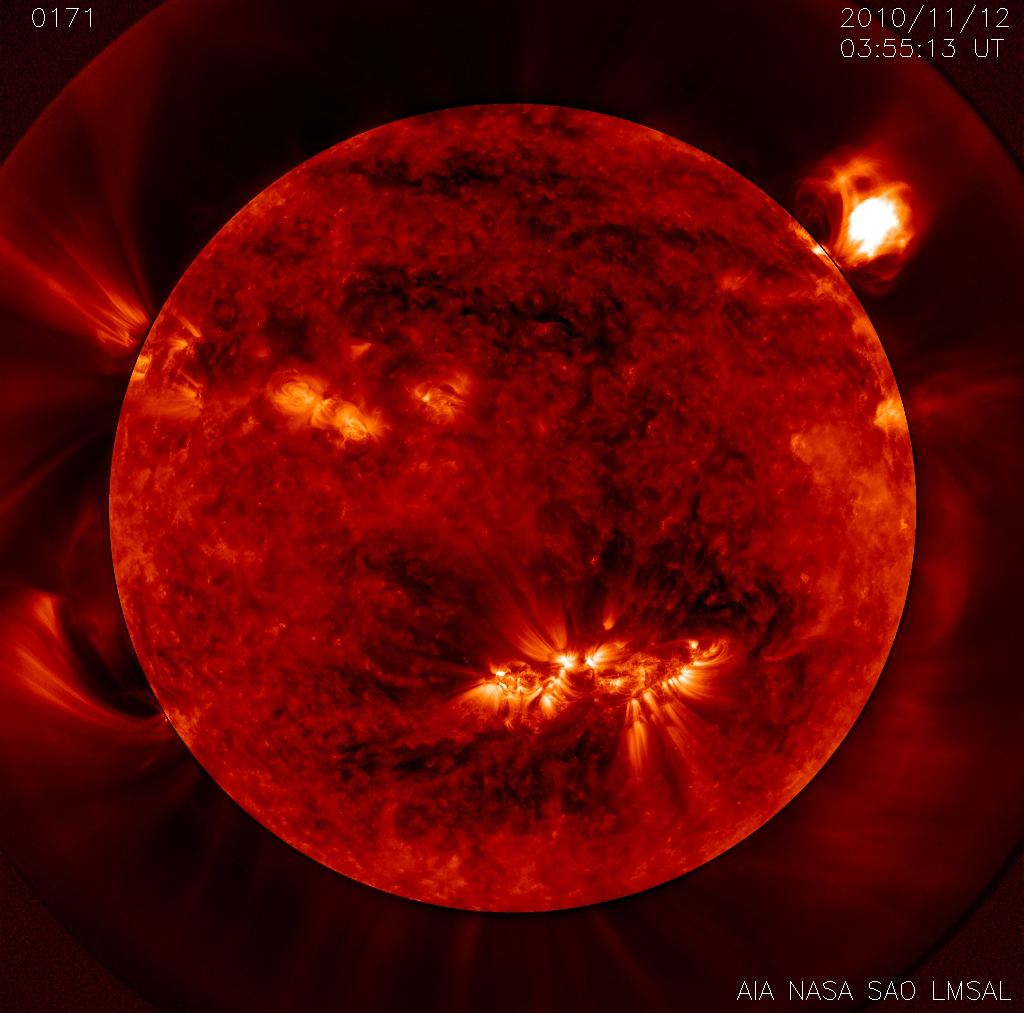Spacecraft Offers Deep Window Into Sun's Hellishly Hot Shell

A NASA spacecraft is giving scientists great looks at parts of the sun's superhot atmosphere that had previously evaded detailed study.
The outer layer of the sun's atmosphere, called the corona, is hotter than the solar surface, but its tenuous light gets swamped by the much brighter solar disk. Historically, researchers have studied the corona during eclipses, when the moon blocks out the disk and reveals the corona, or by using an instrument called a coronagraph, which similarly blocks out the sun's disk.
However, eclipses are relatively rare and don't last long, and coronagraphs occlude the inner parts of the corona. Now, NASA's Solar Dynamics Observatoryis helping scientists overcome these problems, yielding unprecedented views of the innermost corona 24 hours a day, seven days a week.
"We can follow the corona all the way down to the sun's surface," Leon Golub, of the Harvard-Smithsonian Center for Astrophysics, said in a statement.
The instrument aboard SDO that makes this possible is called the Atmospheric Imaging Assembly. AIA's images highlight the ever-changing connections between gas captured by the sun's magnetic field and gas escaping into interplanetary space, researchers said.
The sun's magnetic field molds and shapes the corona. Hot solar plasma streams outward in vast loops larger than Earth, then plunges back onto the sun's surface. Some of the loops expand and stretch dramatically until they burst, belching plasma outward.
"The AIA solar images, with better-than-HD quality views, show magnetic structures and dynamics that we've never seen before on the sun," said astronomer Steven Cranmer, also of the Harvard-Smithsonian Center for Astrophysics. "This is a whole new area of study that's just beginning."
Breaking space news, the latest updates on rocket launches, skywatching events and more!
Cranmer and Harvard-Smithsonian colleague Alec Engell developed a computer program for processing the AIA images above the sun's edge. These processed images imitate the blocking-out of the sun that occurs during a total solar eclipse, revealing the highly dynamic nature of the inner corona, researchers said.
The images will be used to study the initial eruption phase of coronal mass ejections (CMEs) as they leave the sun, and to test theories of solar wind acceleration based on magnetic reconnection.
SDO, which launched in February 2010, is the first mission in a fleet of NASA efforts to study our sun. The five-year, $850 million mission is the cornerstone of a NASA science program called Living with a Star, the goal of which is to develop the scientific understanding necessary to address those aspects of the sun-Earth system that affect our lives and society.

Space.com is the premier source of space exploration, innovation and astronomy news, chronicling (and celebrating) humanity's ongoing expansion across the final frontier. Originally founded in 1999, Space.com is, and always has been, the passion of writers and editors who are space fans and also trained journalists. Our current news team consists of Editor-in-Chief Tariq Malik; Editor Hanneke Weitering, Senior Space Writer Mike Wall; Senior Writer Meghan Bartels; Senior Writer Chelsea Gohd, Senior Writer Tereza Pultarova and Staff Writer Alexander Cox, focusing on e-commerce. Senior Producer Steve Spaleta oversees our space videos, with Diana Whitcroft as our Social Media Editor.

